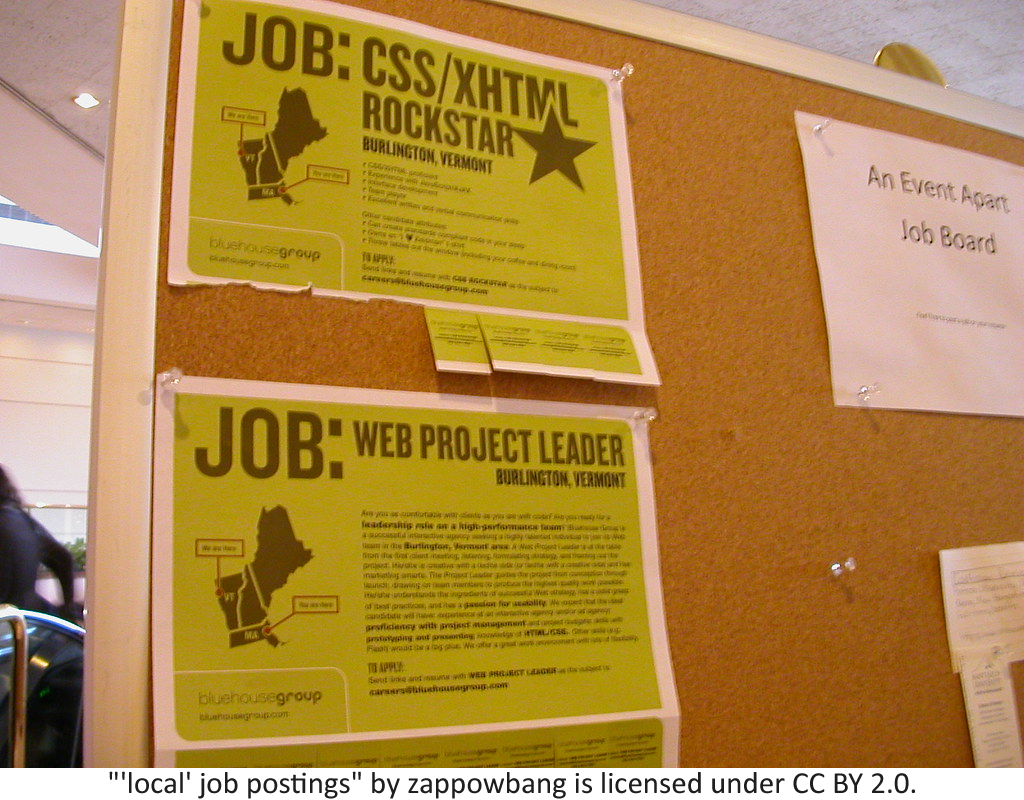Job Posting
A job posting must be informative, clear, transparent, and appealing to potential child welfare job candidates. It should also be candidate-centric and answer questions candidates often ask, especially any key information that has turned out to be a dealbreaker for people later in the process. This QIC-Tip is designed to highlight actionable strategies to create a good job posting. Please note that the information presented is not meant to override or supersede local, state, or federal legal civil service or human resources guidance.
 Think of the job posting as a marketing opportunity for your agency and highlight the positive aspects of your agency’s culture and personality that would make an applicant want to work there. Begin by describing the purpose of your agency and how you work to achieve it. You may also want to include your agency’s core operating principles, values, mission, and vision. These statements should be clear and authentic. Consider giving examples of how you live up to these, so they sound like this is the way that you do business rather than just being mere written formalities. You may want to ask current employees what they like about the agency and how to best communicate that to candidates. Know your competitors and how you differ from them. Highlight the positive differences.
Think of the job posting as a marketing opportunity for your agency and highlight the positive aspects of your agency’s culture and personality that would make an applicant want to work there. Begin by describing the purpose of your agency and how you work to achieve it. You may also want to include your agency’s core operating principles, values, mission, and vision. These statements should be clear and authentic. Consider giving examples of how you live up to these, so they sound like this is the way that you do business rather than just being mere written formalities. You may want to ask current employees what they like about the agency and how to best communicate that to candidates. Know your competitors and how you differ from them. Highlight the positive differences.
Format:
- There is no “right” order, but organization always helps people quickly find key information. Create clear sections with headings.
- Write in a concise, direct style and avoid using complex words, acronyms, abbreviations, or child welfare jargon that individuals, especially those just entering the child welfare workforce for the first time, might not be familiar with.
- Make it mobile friendly to ensure that the posting will reach the widest audience.
- Use embedded links, or shortened URLs, to more in-depth information that would be helpful for candidates to know.
- Consider a mix of media (not just all text) to make it more appealing and less bureaucratic.
Content:
Job postings should convey only the most important information and you should avoid overloading the job posting with highly specific details or wordy requirements. Customize the language to the position, rather than including general or vague language that may or may not apply to the job in question. The following tips can guide development of specific components of the job posting including the job description, candidate qualifications, job hours and location, compensation and benefits, learning requirements, supervision, and support. Employee testimonials that highlight a day in the life of an employee or how they feel their job makes a difference are a powerful way for a potential applicant to gain insight into the job. Quotes can also create richer content.
What They Will Do: Job Title and Duties
- Clearly describe the duties required for someone in this position. Tailor it to the exact role; focus on the activities that are most essential and commonly performed.
- Include a realistic job preview (RJP) video or written RJP to provide a richer description of the work. An RJP can show what a typical day looks like, not just the extreme days, and address misconceptions about the work and any special duties.
- Explain equipment and resources that will be provided to do the work (e.g., cell phone, laptop/tablet, agency vehicle, parking).
Candidate Qualifications:
- Define minimum qualifications (typically education and/or experience) and specific licenses, knowledge, skills, or physical abilities that are expected at the time of hire. Omit (or discuss elsewhere) additional knowledge and skills that will be acquired through training or on the job.
- Include other requirements such as reliable transportation, vehicle insurance, driving record, references, transcripts, criminal history records, COVID screening, testing, or vaccines.
Work Location and Hours:
- In addition to stating the county, city, or office location of the position, describe where workers spend their time and how much time they spend in the field, in the office, and in court. How far will they need to travel and how often? When will they begin casework and what will their caseload look like?
- Define the position as full time or part time, and clarify the typical and maximum number of hours worked per week. It is also useful to state the typical hours every day (e.g., 8-5), noting the nature and frequency of exceptions (e.g., evenings, weekends, overnight).
- Describe breaks, holidays, and leave options.
- Discuss telework policies and address exceptions to work hours, (e.g., alternative or flex schedules, compressed work week) and the need for on-call work and how often.

Compensation and Benefits:
- State the pay (hourly and/or annually) and if there is a range, explain what determines the final amount.
- Describe hiring or retention bonuses or other circumstances (e.g., overtime, mileage reimbursement) that lead to additional pay or benefits such as education/bilingual incentives, tuition remission, loan forgiveness or relocation assistance.
- Discuss the benefits package and the estimated value of those benefits.
Learning and Development:
- The length of pre-service or new worker training, content, and methods (e.g., self-paced online, webinar, in person, simulations, field training, shadowing), underscoring how the training will prepare them to do this work, especially the more challenging aspects.
- Identify other kinds of training and opportunities for growth and promotion will be available. Describe how those will benefit them in their job and career.
Supervision and Support:
- Be clear about how much supervision and support from supervisors, trainers, coaches, field trainers, mentors, and coworkers a new worker can expect, especially early in the job.
- Include specific employee well-being practices or initiatives and address personal safety and what support will be provided (e.g., accompaniment by law enforcement).
- Inform workers about relevant unions.
The job posting is the first step in connecting with a potential candidate. Take the time to briefly explain all the steps in the hiring process. This will help make the process more transparent to potential applicants and give them an idea of what to expect. Be sure to include what to complete (or not) and how to submit the application (make it as easy as possible and include various alternative means to do so), closing date and time, types of assessments, conditions for passing, when and how they can expect to hear from you, and a point of contact.